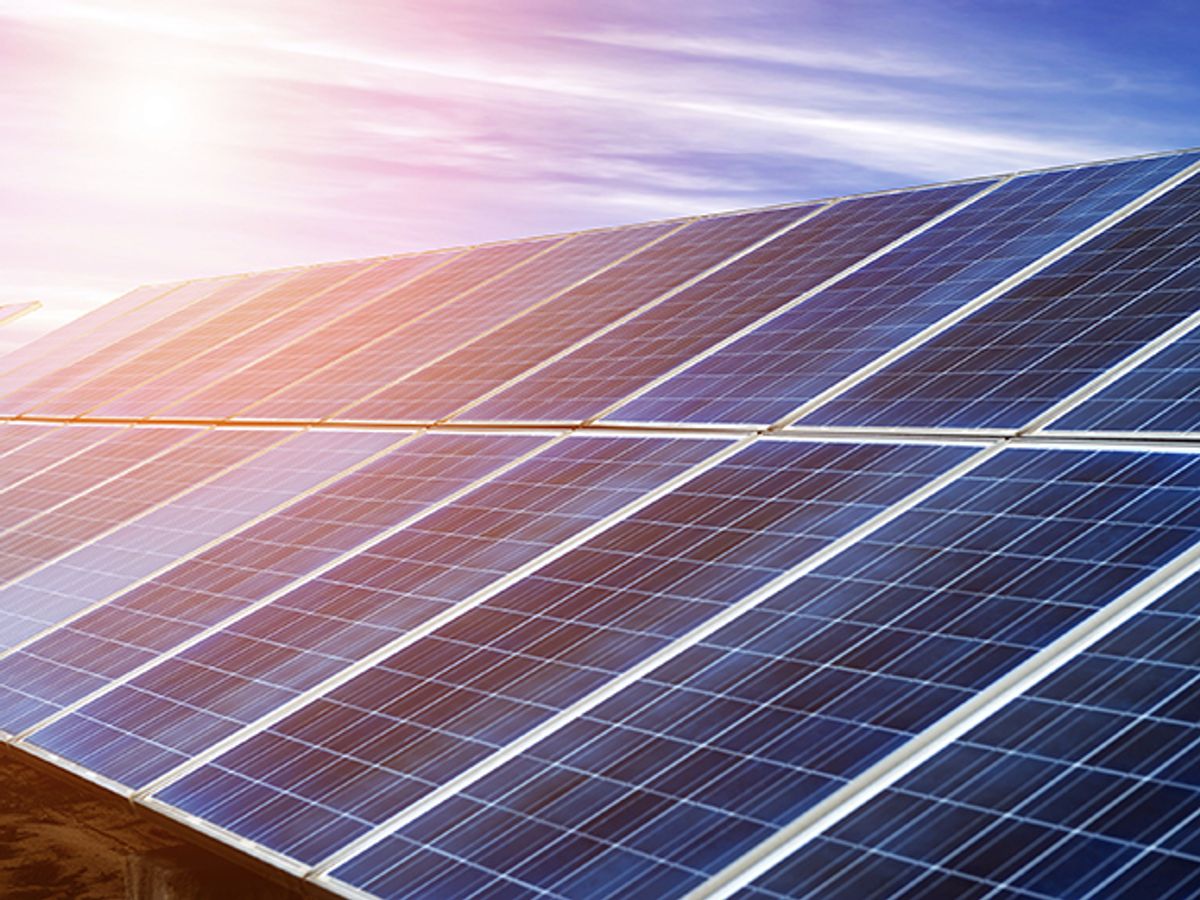In the artificial photosynthesis world, the recent buzz has been about new records set on water splitting by solar energy to make hydrogen.
However, a slightly newer, but similar, field of research is looking at another form of artificial photosynthesis—using solar energy to turn carbon dioxide into fuel. Such a technology would have the added benefit of removing a potent greenhouse gas from the atmosphere or preventing it from getting there in the first place.
Researchers with the Joint Center for Artificial Photosynthesis at Lawrence Berkeley National Laboratory report today in the Proceedings of the National Academy of Sciences that they have evaluated the potential efficiencies of this process for several different photoelectric cell configurations, catalysts, and fuel end products.
The group concluded that solar energy could break down CO2 into synthesis gas—a blend of hydrogen and carbon monoxide that used to make other hydrocarbons—at an efficiency of 18.3 percent or could make liquid hythane—a mix of hydrogen and methane—at 20.3 percent efficiency.
The idea of using sunlight to consume CO2 and make fuel “has been around for awhile, but the challenges have been too great and there hasn't been a nationally focused effort,” Bell adds.
To date, reported solar-to-fuel efficiencies have been less than 7 percent, so reaching 18 to 20 percent would be a vast improvement, says Alexis Bell, professor of chemical engineering at the University of California, Berkeley, who led the research. Natural photosynthesis typically has an efficiency of between 0.5 percent and 1 percent, and is rarely higher than 2 percent.
Essentially, the way artificial photosynthesis devices work is that the photoelectric cell absorbs sunlight and uses the energy to break water into oxygen and hydrogen. The hydrogen then attacks CO2 to make hydrocarbons and more water, Bell explains.
The trick, according to Bell, is figuring out the best configuration for light absorbers that will provide enough energy to break down CO2, as well as a "good catalyst that both converts the carbon dioxide efficiently and can selectively make the fuel you want.” At the end of the reaction, "you don't want 10 products; you want one or two products with high energy density" that can be used either as transportation fuel or to make electricity.
Bell and his colleagues looked at four different photoabsorber configurations: photoelectric cells having one, two, or three p-n junctions, as well as a photovoltaic electrolyzer—a system where the photovoltaic is outside of the reaction chamber. They studied each of those in conjunction with copper or silver cathodes for the hydrocarbon forming reaction.
Ultimately, the researchers identified two configurations for two different types of fuel as being ideal. In one, they calculated that an iridium oxide anode with a silver cathode on a triple-junction photoelectric cell should be able to produce synthesis gas at a solar-to-fuel efficiency of 18.3 percent. Alternatively, the team calculated that hythane could be produced using an iridium oxide anode and copper cathode at a theoretical maximum efficiency of 20.3 percent. (Hythane is being studied for its potential to serve as an alternative fuel that produces significantly fewer emissions than diesel or natural gas.)
The Joint Center for Artificial Photosynthesis was established in 2010 as a U.S. Department of Energy Innovation Hub led by scientists at Caltech and its main partner, Lawrence Berkeley National Laboratory. In April, the DOE granted the center $75 million for another five years of work.
Bell says the group's goal is to have a small prototype device by the end of its five-year funding period. The fuel produced could be used as cleaner-burning alternatives to gasoline for transportation, or also to make electricity.
Bell envisions a scenario where such a solar-fuel device could be coupled with large solar energy installations. Surplus solar energy that is not immediately used as electricity could produce fuel that would be stored for a rainy day.
This type of solar storage might be preferable to batteries, which typically have low energy density, Bell says. Today’s battery technology for storing solar energy could not supply electricity for a rainy week in the U.S. Midwest, he says.
In addition, he says, while an attractive prospect is to obtain the carbon dioxide directly from the atmosphere, a more realistic solution would be to use carbon dioxide generated at natural gas wells. While there is a lot of CO2 in the atmosphere, he says, it is "too diffuse" for it to be a good source; so until cost effective methods are developed to gather and condense atmospheric carbon dioxide, artificial photosynthesis will need other sources.
Fortunately (or unfortunately), there are currently plenty of man-made CO2 sources to choose from.



